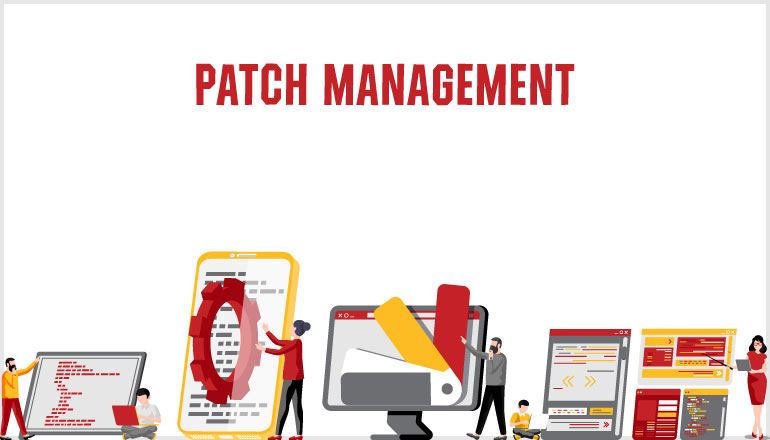Every organization’s assets are much more vulnerable to the ever-increasing threat vectors in the cyber security space. Patch management is one of the key processes that can be used to keep the assets (systems and application frameworks) up to date from most of the vulnerabilities that compromise organization’s information assets. This blog will help readers to get insight into the importance of patch management process in securing organizations’ cyber space.
CONTENTS:
- Introduction
- What is the Need for Patch Management
- Patch Management
- Patch Management Tools and Frameworks
- Patch Management Advantages
- Conclusion

1. Introduction:
The term “Software Patch” refers to code change, update or upgrade for an application or an operating system. In cybersecurity, “Patch” refers to a security update the said application or operating system. Application vendors such as Microsoft, Cisco, and Adobe etc., used to roll out regular updates covering both Application functionality and security to their customers and end-users at regular intervals. Sometimes, application vendors may release security patches, if they or their customers encountered any data breach or malware attacks due to zero-day vulnerabilities in an application.
2. Why does businesses need Patch Management Service:
With cyber-attacks being reported more frequently in the news:
- It is critical for not only highlighting the vulnerabilities in their assets, but also fixing it.
- It is imperative businesses keep their devices updated to help stop hackers exploiting security weaknesses.
- Unpatched systems and servers can be a target for hackers to exploit their vulnerabilities in network services or software's.
- Having a Patch Management service that updates your devices, regularly and proactively, keeps your infrastructure consistent as patches can include performance improvements and fix errors which are frequently causing your systems to crash.
- Updating systems with latest patches will help address software crashes, leaving employees free to work without the hassle of downtime.
- Timely and comprehensive patch management, combined with effective control of applications, devices, and admin rights, can improve any enterprise’s security posture, rapidly and dramatically in many cases.
- Patch management services develop and deploy consistent processes for acquiring, testing and deploying the patches most critical to your environment.
Patch management:
Patch Management is a continuous process or strategy for management of patches installed in the IT assets like servers, workstations, and VoIP phones etc., that involves acquiring, testing, and installing multiple patches (code changes) to an administered computer system. For example, let’s take a vulnerability called ’Shellshock’ which affected a lot of Linux servers across the world. Companies that did not apply the Linux patches for that vulnerability were on immediate risk.
In simple terms, if hacking is a threat or poison, then Patch management is like the safety net. Patch Management is done by most software product, services & consulting companies as a part of their internal efforts, to fix problems with the different versions of software programs and also to help in analysing the existing software programs, detecting any potential lack of security features or other upgrades along with secure code review.
Patch management Process:
The below image shows a typical Patch Management process in an organization:
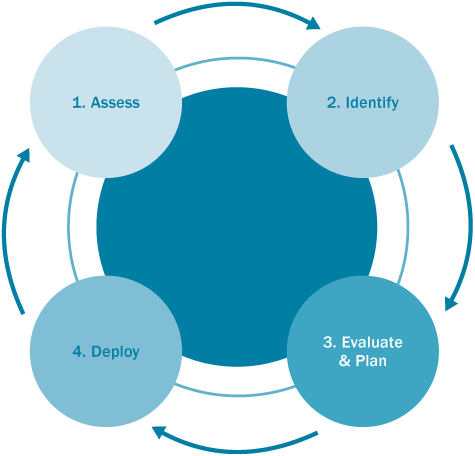

- The process of Patch Management involves identifying the IT assets of the company which needs to be evaluated for fixing all the security vulnerabilities. Assets includes all the workstations, desktops, laptops, servers and/or any other network element.
- After identification of all the assets, it is recommended to conduct an automated or manual Vulnerability Assessment (VA) using a Patch Management or Vulnerability Analysis Tool in-order to find out all the vulnerabilities in applications or systems, which includes the missing patches for the system.
- Once the VA process is done, the analyst will have the list of vulnerabilities in the IT assets and also the applications of an organization. Analyst can analyse, evaluate, and plan the patch management process to install patches and then fix the vulnerabilities.
- In the final step, patches are deployed in the testing or staging environment before deploying across the organisation. The patches are deployed only after all the errors are fixed and dependencies are managed.
Patch management Best Practices:
Below are some of the patch management best practices which will helps the organizations to enhance their cyber security quality.
- Understanding the importance of patch management: Knowing the importance of a patch management process is critical for any organization. Deploying the latest patches from software vendors plays a critical role in protecting vulnerable systems from zeroday threats.
- Outcome of delayed patch deployment: Delay in patch deployment causes critical impacts in security, leading to data breaches. To thwart it, organizations should deploy patches in quick time without delays.
- Availing the services of managed service providers like BriskInfosec: Managed service providers provide patch management software to fit the requirements of business organizations and also in taking control of the patch management process, thus helping out organizations.
- Deploying Patch Testing: Some patches are not compatible with specific operating systems or applications, which may lead to software crashes and in causing production problems in company. It is recommended to run a patch test or deploy patches in staging environment to test its compatibility.
Patch management Tool and Frameworks:
Patch Management tools are helpful in automating the process of finding the missing patches in a system and recommending the appropriate fixes for the systems. Some of the well-known patch management tools are Microsoft SCCM Patch Management, GFI Languard, Symantec Patch Management Solution, and Comodo Patch management, etc.

Below are the work flows of some of the patch management tools:
ManageEngine Patch Manager Plus:
ManageEngine Patch Manager Plus is a comprehensive, stand-alone patch management solution that is available both on-premises and on the cloud. With Patch Manager Plus, you can customize and automate the entire patching process, including scanning and detecting missing patches, testing and approving these patches, and deploying them to your endpoints.
Patch Manager Plus stands out for its competitive pricing, extensive support for over 500 third-party applications, and support for heterogeneous environments (Windows, macOS, and Linux). Patch Manager Plus' scalability and its ability to manage remote and roaming machines seamlessly makes it the perfect patch management solution for enterprises of all sizes.
.png)
Microsoft SCCM Patch Management:
Microsoft’s SCCM (System Center Configuration Manager) is a paid lifecycle management solution from Microsoft that keeps track of a network’s inventory, assists in application installation, and deploys updates and security patches across a network. While SCCM uses Microsoft’s WSUS patching system to check for and install updates, it gives users additional patch management control over when and how patches are applied, and includes many more features which make it an attractive option for large enterprise networks.
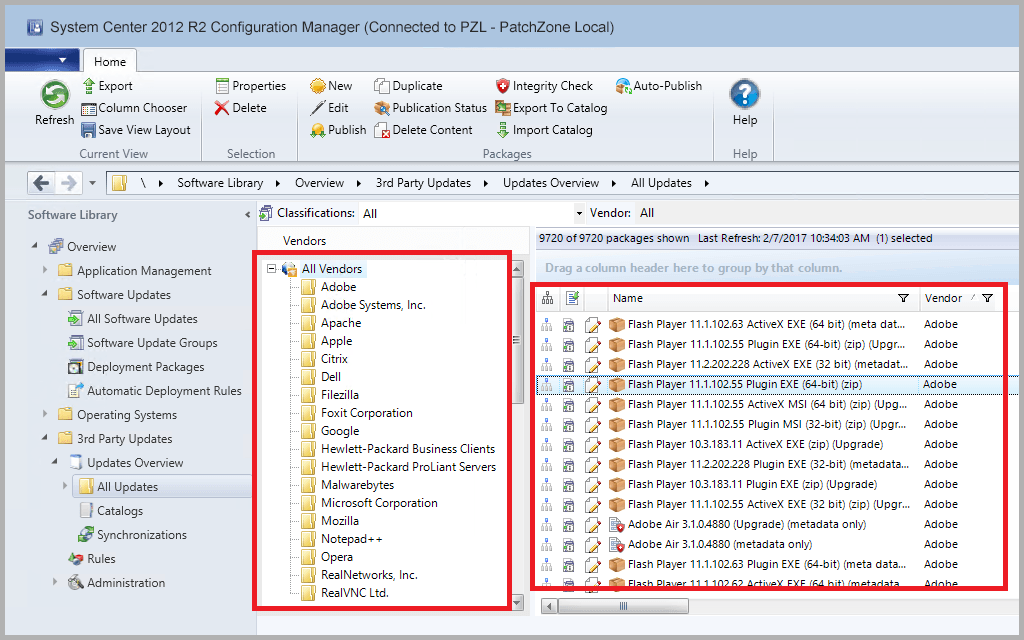
GFI LanGuard:
GFI LanGuard is an on-premise network security and patch management solution for small, midsize and large businesses. Primary features include patch management, vulnerability assessment, network and software auditing and dashboards.
GFI LanGuard scans users’ systems automatically and on-demand to detect, assess and correct any network/software vulnerability. It auto-downloads missing patches or rolls back updates to achieve stable and consistent configuration on all the devices connected to the network. Other features include compliance management, change management, inventory assessment and total cost of ownership (TCO) management.
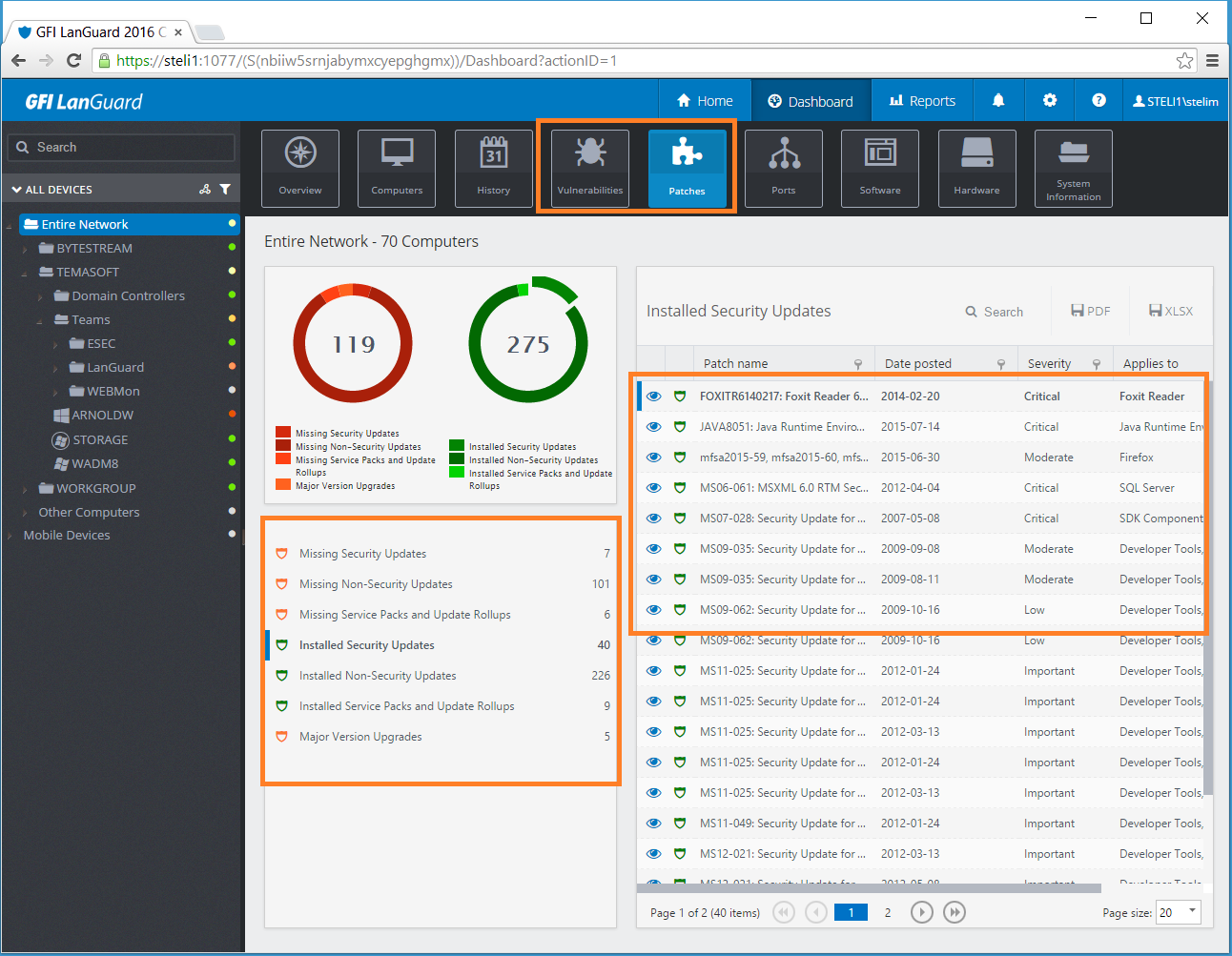
Symantec Patch Management Solution:
Symantec Patch Management Solution can assist organizations in meeting their security needs by automating the detection and facilitating the remediation of security vulnerabilities for multiple operating systems. Patch Management Solution provides visibility into newly released software updates and the means to identify computers susceptible to the vulnerabilities addressed by such updates. It also automates the download of software update packages from vendor sites and the distribution of those packages to computers which require those patches.
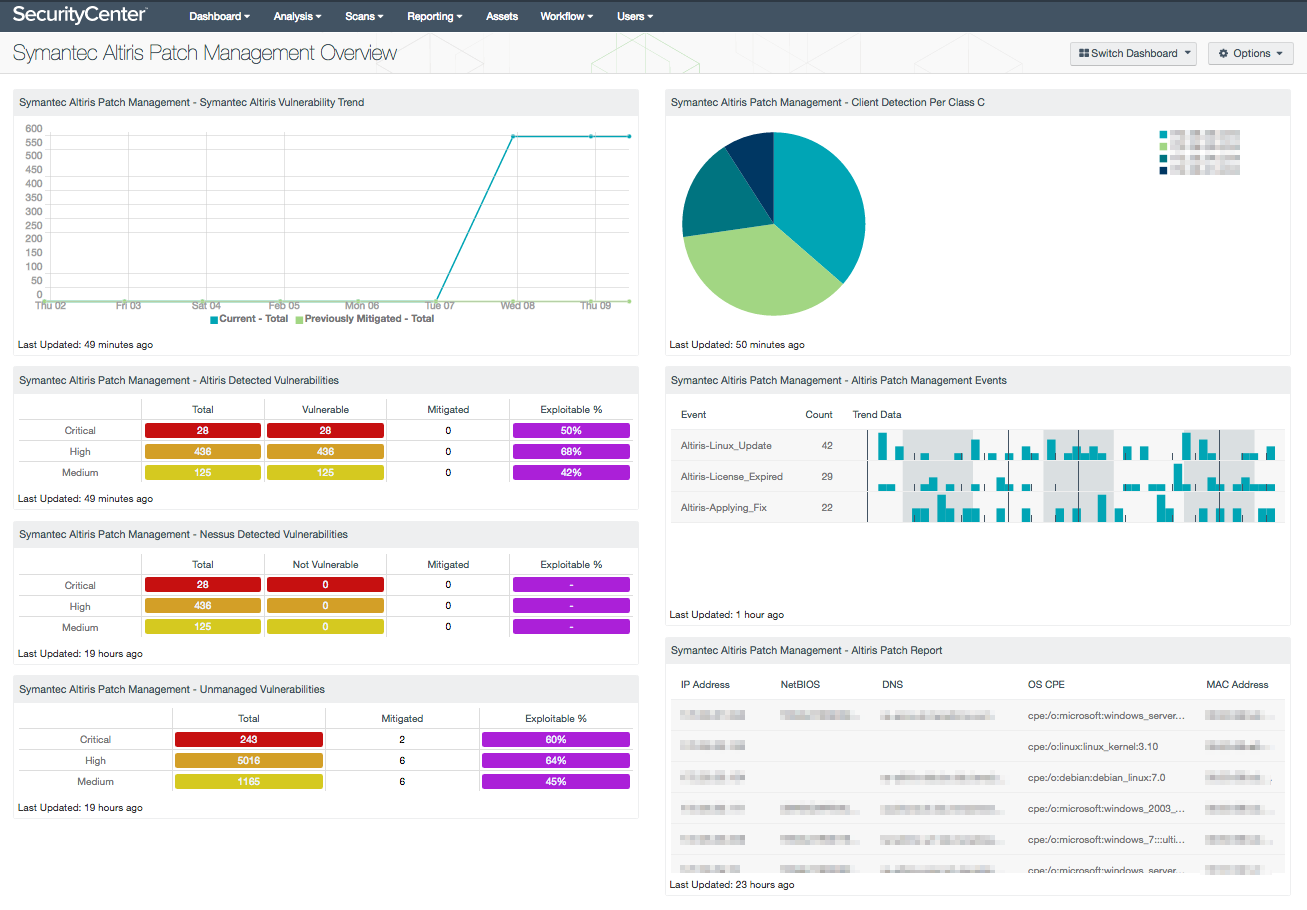
PatchMan:
Patchman is a Django-based patch status monitoring tool for linux systems. Patchman provides a web interface for monitoring the package updates available for linux hosts.
Patchman clients send a list of installed packages and enabled repositories to the Patchman server. The Patchman server updates its package list for each repository and determines which hosts require updates, and whether those updates are normal or security updates. The web interface also gives information on potential issues, such as installed packages that are not from any repository.
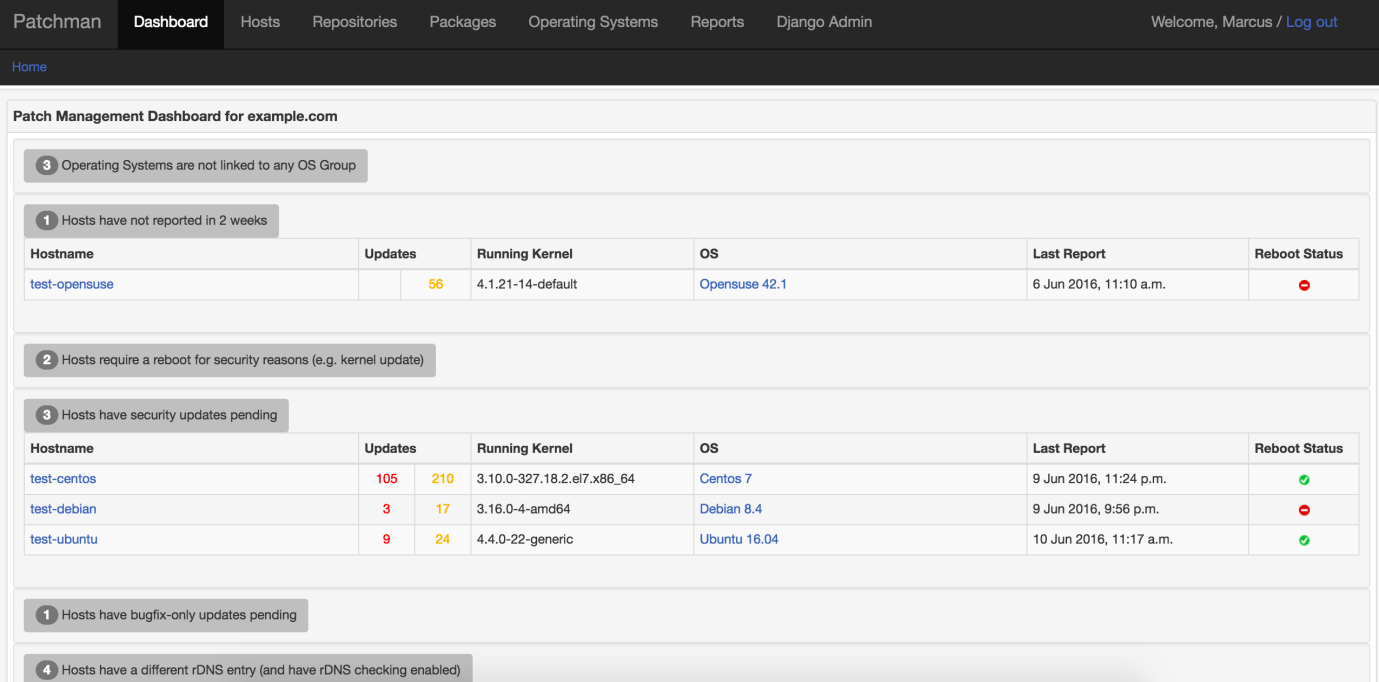
Patch Management Advantages:
There may be a lot of software’s running in the organization and you can’t be sure that all of them are secure. Each system and software have its own set of flaws. This means a lot of patches will be released from multiple sources of application vendors. It is not easy for an IT admin to install patches from various sources on an up-to-date basis.
With the help of patch management process and tools, IT security admin can deploy patches for the systems and applications, and also can keep track of patches deployed. Also, it's possible to keep track of how many systems are patched till date.
Conclusion:
Patch Management is one of the vital process of securing the IT assets of an organization. Briskinfosec recommends organizations to carry out proper and continuous patch management process to fix internal and external vulnerabilities of their IT systems and applications.
As the idiom for good health goes – Prevention is better than Cure.
How Briskinfosec Helps You?
Patching your enterprise’s most critical clients, servers, applications, and operating systems is often a labor-intensive, manual process. Briskinfosec has an expert team of patch management security professionals whom have a vast experience in patching security vulnerabilities. Further with regards to vulnerabilities, both internal and external ones of the applications are identified and fixed. After successfully accomplishing it, we also provide practical awareness on similar threats, helping you to understand the importance of fixing those issues on a regular basis.
References:
